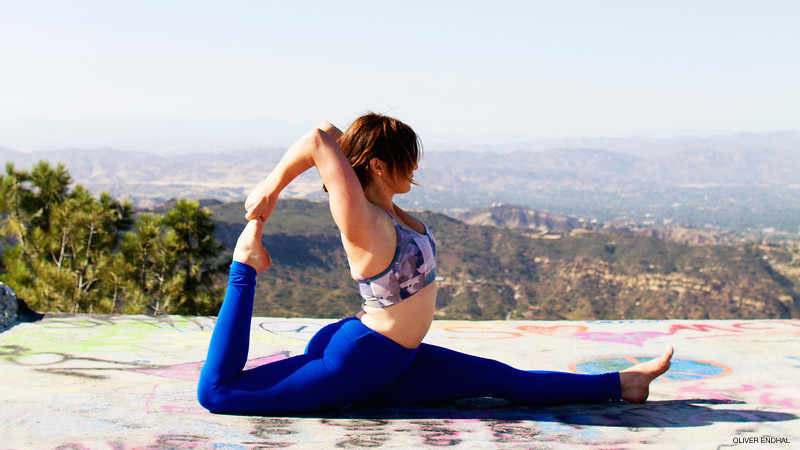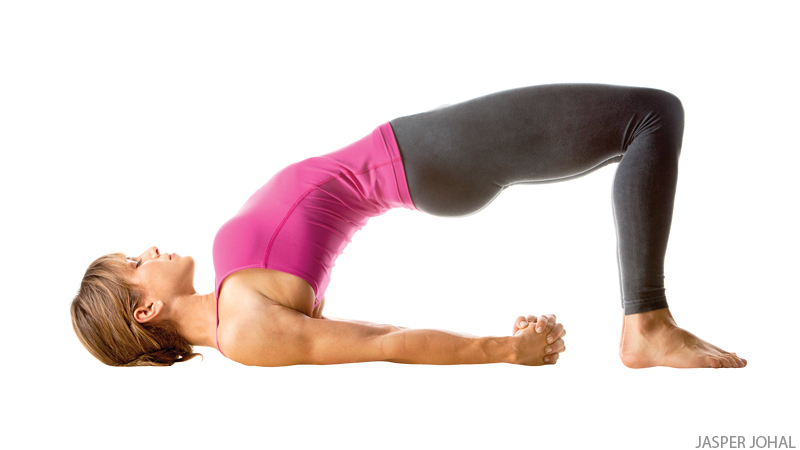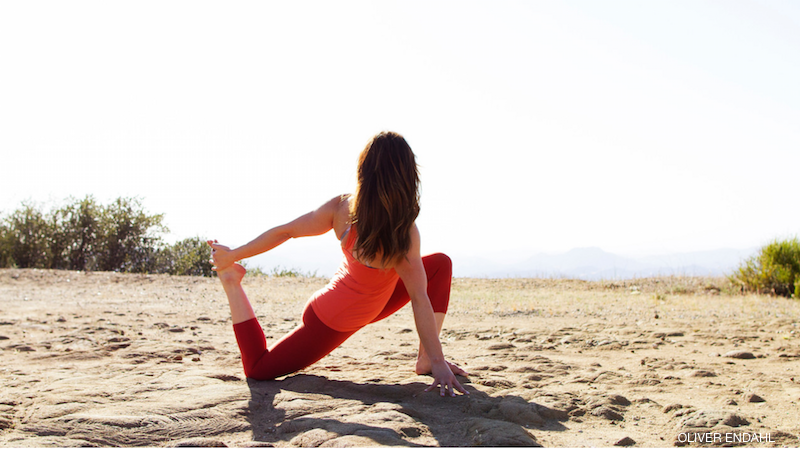![]()
“Soft,” “relaxed” glutes never had an inspiring ring to Alexandria Crow until she really understood the anatomy behind the less-than-clear alignment cue.
There are all sorts of cues given about the gluteals in yoga. “Soften the glutes,” “draw the buttock flesh down,” etc. As a student, these cues always conjure visions of a saggy derrière for me—and to be honest I don’t want a saggy booty. Without knowing gluteal anatomy, it’s logical to believe that that the more you contract, grip, and tighten your tush, the higher and rounder it would become. But it turns out learning to relax your glutes in certain poses is key to specific actions necessary for safe backbends.

The Anatomy Behind the Cue
The gluteal system can be confusing for students and teachers alike. It’s divided into three individual muscles—gluteus minimus, medius, and maximus—each of which has a unique as well as overlapping impact on the movement of the hip joint. Teachers are primarily speaking of the actions of the gluteus maximus when they’re instructing students to “relax glutes.” To complicate things, the gluteus maximus has several part-time jobs: it abducts the hip (moves the leg away from the midline), extends the hip (moves the leg behind the pelvis), and externally rotates the thigh at the hip (turns the leg out).
Different yoga poses require it to do different jobs—some asking it to multitask and do more than one thing at a time. The problem with that is, gluteus maximus really likes its external rotation job (turning the thighbone out) best, so it tends to try to do more of that job—even when it’s not being asked to. And if you just tell your gluteus maximus to totally relax and quit working all together, you miss out on everything else it can do.

What Your Teacher Doesn’t Want You to Do…
In short: Grip your your gluteus maximus into a backbend and as a result externally rotate your legs, which isn’t safe for the spine.
In most backbends the spine isn’t the only set of joints doing the backbending, the hip needs to be extended as well. There are a few muscles besides gluteus maximus that extend the hip and in a lot of people those muscles are weaker for a variety of reasons and so the gluteus maximus, a classic overachiever, does the job for everyone. Teachers usually cue students to “relax your glutes” in backbends, to avoid that external rotation that tends to result from the gluteus maximus’ effort to extend the hip. The thing is, you don’t want to turn the gluteus maximus off completely either.
To keep reading visit YogaJournal.com






